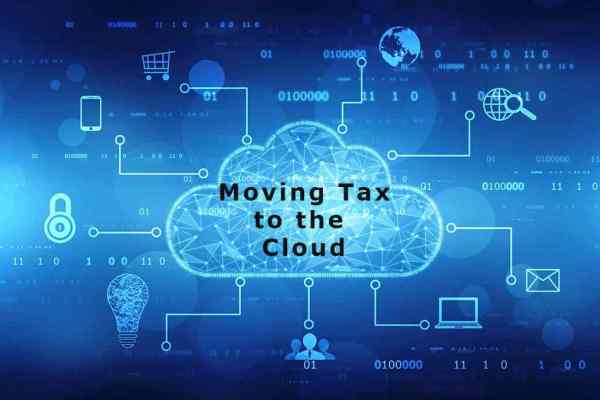Moving tax to the cloud will redefine the future of financial operations
Across the entire ICT landscape, there have been magnanimous changes that have revolutionised industries. Within organisations, we have seen that their entire application stack, which includes core as well as peripheral applications such as ERP and CRM are increasingly being moved to the cloud.
Moving to the Cloud
In fact, in most cases, companies are choosing to move their entire application architecture from monolithic to microservices, which has proven to bring about more scalability, agility, and containerisation.
Among the various sectors which have reaped the benefits of moving to the cloud, one of the most important business financials functionality managed in these ERPs is tax. Owing to the dynamic nature of the sector, as well as changing policies, tax brackets, and the need to adhere to compliances, the entire tax process management stands to gain immensely from cloud migration.
Moving Tax to the Cloud
More recently, as remote working has become the new normal, it is imperative for businesses to transition their tax function to the cloud in order to maintain process continuity, and provide for remote accessibility. Taking stock of this, what most ERP providers, including OEMs did, was to chart out a path that phased out existing on-premises solutions and products and offer only cloud-based alternatives. Some OEMs also ceased application support and upgrades for older on-premises versions in order to facilitate the transition to cloud-based solutions.
As solutions that are known for their scalability, cloud-based ERP will allow firms to enjoy more control over seamless integration of new policies. Furthermore, this will also give organisations the freedom to make functional changes on the go, as well as replicate them across devices and users, and revise processes in a way that eliminates downtime and business opportunity losses.
Taking stock of the several advantages that the cloud offers, organisations need to evaluate their existing on-premises ERP and migrate it to the cloud for optimal performance. Additionally, monolithic architecture requires continuous investment, whereas cloud infrastructure enables faster go-to-market, dev-ops agility, and business scalability.
Here are a few reasons why organisations should look at moving their tax to the cloud:
Data Visibility
Most tax processes are often carried out in silos in an ‘on-premises’ ERP environment. This has largely been due to different devices, users, and geographies. Traditionally, information flows have also been narrow and isolated which results in limited visibility from a macro-perspective.
Only if there is data democratization and visibility across the board, can insights on processes such as trade information, tax returns, vendor mapping and management, and invoice creation be collected. To this extent, the cloud helps organisations break these data silos, and collate all the data in one centralised location. As a result, there is easy access to data by anyone from the organisation who has an internet connection, and access rights.
Security
Tax is arguably one of the most important functions within the financial sector and is privy to critical business and revenue information that cannot be compromised. Given the recent spate of cyber-attacks, cloud providers have taken it upon themselves to provide businesses with a resilient, robust, and secure ecosystem for their on-cloud applications.
There is also the added challenge that organisations face with shifting their focus from their core business to create a secure framework around their ‘on-premises ERP. Investing in third-party end-point services and security solutions too is an expensive affair. With tax-on-cloud, OEMs take charge of overall testing, patch management, resiliency, and latest upgrades, to ensure data is secure at all times.
Mobility
One of the biggest takeaways from the pandemic has been the importance of remote data access for seamless business continuity. With remote working becoming the new normal, cloud can enable businesses to access their tax processes and data from anywhere, and at any time. This also allows organisations the chance to work with talent pools that are not region agnostic and enjoy increased flexibility in operations.
Scalability
Cloud-based solutions are built-to-scale. During the initial days, when businesses start at a smaller scale, they can operate with a ‘pay-as-you-go’ model, with few applications on-the-cloud. As the business scales, the cloud provides the option to scale the IT stack with it. Businesses can also enjoy scale-at-will, and can scale their database during peak business periods, and resume to normal when it ends, without investing in any additional infrastructure.
Reduced Total Cost of Ownership (TCO)
Since its inception, cloud technologies have come a long way, and offer a plethora of options based on customers’ financial appetite. Naturally, it is considerably lower than what one might pay for an on-premises IT stack. As a cost-effective solution, organisations can opt for a lift-and-shift strategy, where the on-premises ERP is migrated to the cloud.
And as the business scales, they can opt to move their entire infrastructure stack to the cloud. The cloud OEM manages the entire upgrading, scaling, and patching, with a ‘pay-as-you-go’ model. It also considerably reduces the overall total cost of ownership (TCO). Organisations can also choose to stop their cloud subscription, in case the business slows down, to help them reduce their IT baggage.
Cloud is the new normal and organisations must consider moving their IT stack to the cloud to leapfrog their competitors and build economies of scale.
The shift to a cloud-based ERP system represents a once-in-a-generation opportunity for tax leaders to define strong, tax-sensitized data and business processes that fundamentally transform their team’s value to the organisation.
(This article is written by Neelesh Kripalani, CTO – Clover Infotech. The views expressed in this article are of the author.)

